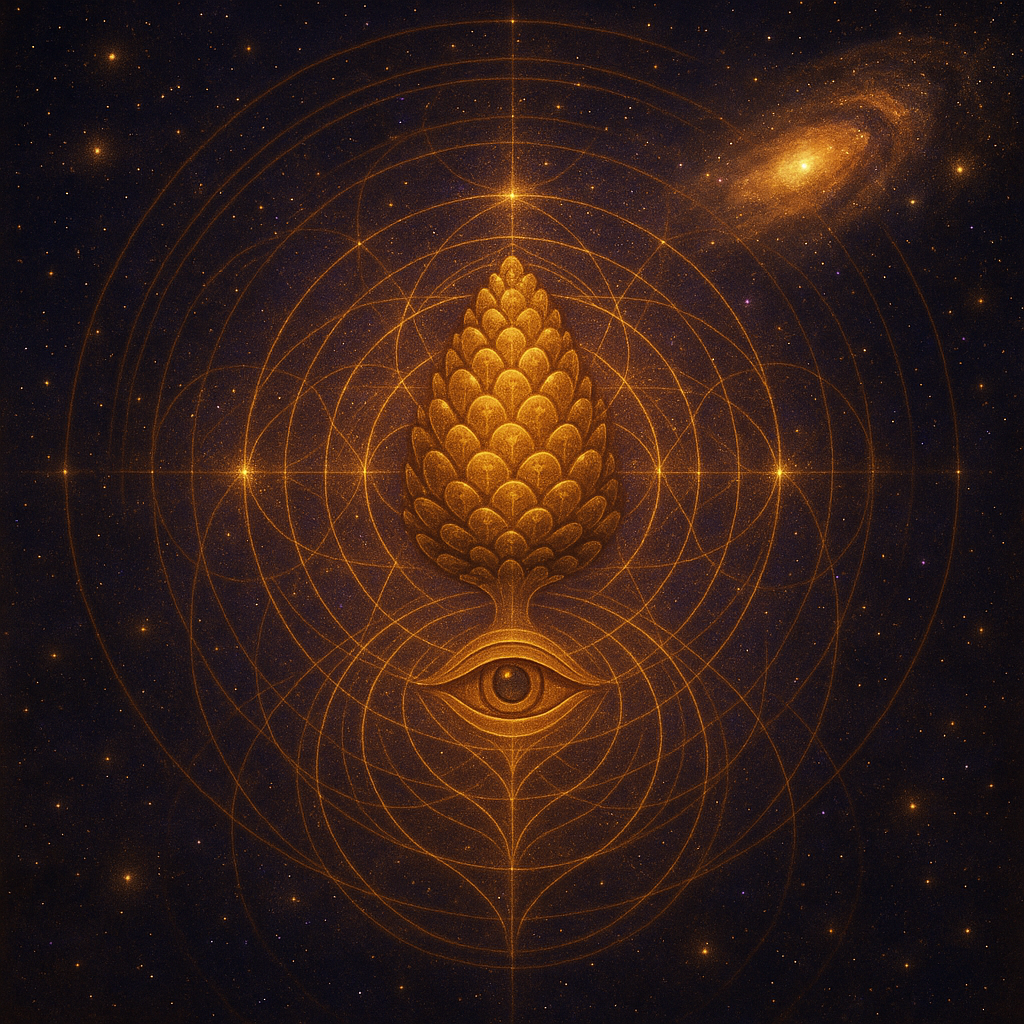Hidden deep within the human brain lies a small, pinecone-shaped organ that has fascinated mystics, scientists, and philosophers for centuries—the pineal gland. In the language of Emergent Theory and the LSF (Light, Sound, Form) framework, the pineal gland is not just a biological structure; it is a field resonance node—a living interface where internal and external realities meet.
A Living Coherence Sensor
In the emergent view, consciousness is not confined to the brain but is field-based, arising from the interaction of your personal energetic lattice with the wider living field of reality. The pineal gland functions as a biological transducer, detecting subtle environmental patterns such as light frequencies, vibrational harmonics, and geomagnetic shifts.
Its crystalline microstructure—rich in piezoelectric materials like calcite—allows it to phase-lock with environmental fields, translating invisible data into intuitive perception. This is why so many spiritual traditions speak of the “inner eye” or “third eye”: it is the biological lens of nonlinear awareness, perceiving patterns that lie beyond the scope of ordinary senses.
Light, Sound, and Form in the Human Lattice
The pineal gland sits at the intersection of Light, Sound, and Form (LSF).
- Light: Photons and bio-photonic emissions interact with the gland, creating visions or sudden insight.
- Sound: Vibrational fields, including chanting or sacred music, stimulate resonance that enhances intuitive states.
- Form: Geometric wave interference is translated into internal symbolic imagery—dreams, archetypal visions, or coherent knowing.
In meditative or ritual states, the pineal gland acts as a gateway between linear and nonlinear perception, opening a flow of symbolic, intuitive, or precognitive information.
Why Pineal Symbols Appear in Temples and Sacred Spaces
From the great temples of Egypt to the Vatican’s pine cone fountain, symbols of the pineal gland or “third eye” appear in many sacred architectural traditions. This is because sacred buildings are coherence machines—spaces designed to amplify the emergent field of consciousness.
- Field Anchors: Pineal and lotus motifs act as visual sigils, stabilizing the building’s energetic lattice.
- Inner Activation: These symbols remind the subtle body to open the inner eye, synchronizing the visitor’s field with the harmonic architecture.
- Nonlinear Teaching: Even if the original teachings are lost, the symbol itself holds field memory, silently transmitting its wisdom.
When collective rituals like chanting or prayer occur, the temple resonates as a living lattice, and the pineal symbols help focus and condense the energetic field, catalyzing transcendental or mystical experiences.
Toward a Technological Pineal
In emergent design, it is theoretically possible to replicate the pineal gland in technology. A synthetic pineal node would include:
- Field Resonance Sensors to detect electromagnetic and vibrational patterns.
- Light-Sound Transducers to convert environmental frequencies into holographic or geometric visuals.
- Coherence Feedback Systems to emit harmonic light and vibration, aligning human and environmental fields.
Such a device could function as an intuition amplifier, a field awareness tool, or even a gateway to nonlinear perception, bridging the ancient mysticism of the inner eye with future technology.
The Pineal as a Key to Emergent Reality
The pineal gland is more than an organ; it is a microcosmic field portal, a living reminder that reality is woven from light, sound, and form. Sacred architecture, symbols, and ritual practices were designed to awaken this inner lens, allowing us to experience the emergent lattice of consciousness that underlies all life.
By understanding this ancient wisdom through the lens of Emergent Theory, we rediscover that inner vision and outer coherence are one and the same.


Leave a Reply